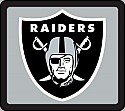In a previous blog I mentioned R.E. Lee's comment to General Meade at Appomattox. After the Confederate surrender Lee went back to Richmond to take care of his sick wife. The Lee's lived in a modest house but were constantly interrupted by well-wishers, former soldiers, friends and curious on-lookers.
The reasoning behind many of the visitations were former Confederates seeking Lee's advice on taking the Oath of Allegiance to the United States. This oath would grant former Confederates amnesty from Federal prosecution as traitors. Also, it restored U.S. citizenship to the rebel politicians/soldiers who participated in the Confederacy. Many southerners felt that the oath was stupid and didn't want to take it because it trampled upon their reasoning for revolting. The Federals needed a man who was admired by almost everyone in the south and many looked to Lee to be this person. If the great commander swore allegiance to the Union than the former confederates would do the same.
Therefore, both sides saw Lee as the mythical leader of the Confederacy long before the Lost Cause institution made Lee perfect. One such man was General George G. Meade, the commander of the Army of the Potomac and the victor of Gettysburg. The Union general called on his former opponent and friend in Richmond as his army made its way back to Washington. Meade, dressed in his officers uniform knocked on Lee's door and was admitted inside. Both men were friends prior to the war and Meade may have been acting under Grant's orders to urge Lee to take the oath.
Meade asked Lee to sign the necessary documents and swear allegiance to the Union. Such a scenario would be an advantage to Lee because it would reestablish his civil status and set and example for all confederates to follow. "Bobby" Lee told Meade that he was waiting to see if the Federal Government would treat the South harshly. Based on this comment one would assume that Lee was willing to lead another revolution if the Union victors mistreated Southerners.
General Meade's response was that the oath and signature were not asking for much and such an action would
guarantee civil rights and amnesty from Federal prosecution. Lees belief was that the surrender of Appomattox freed him and his former soldiers from trial and taking an oath was
ambiguous. After seeing that any further argument against the former commander of the Army of Northern Virginia would be a waste of time Meade departed. The two friends never saw each other again.
It can be assumed that Meade, if under orders or not, reported this to U.S. Grant. Eventually, Lee would take the oath, do his duty and face heat from many former Confederates. Lee's example worked as many former Confederates followed their hero and their former commander one last time by completing their own oath processes. Many former Confederates enjoyed their renewed civil status and many were elected
governors and as prominent civil leaders. As for Lee the future of his civil status wasn't so bright.
General Lee's oath documents like all the others had to have a Presidential
signature in order to be
official. The gray-haired commanders materials never reached President Johnson's desk and were misplaced by someone in the war department. He never
received his U.S.
citizenship during his lifetime and died as the the head of Washington College in Lexington, Virginia in 1870. In 1970 the documents were reported to have been discovered within the National Archives. President Gerald Ford signed the papers in 1975 and Lee's citizenship was restored 105 years after his death. "I believe it to be the duty" he wrote "of everyone to reunited in the restoration of the country."
Sources:
http://www.archives.gov/publications/prologue/2005/spring/piece-lee.htmlFlood, Charles Bracelen. Lee--the Last Years. Boston: Houghton Mifflin, 1981.
























